How to Play Pickleball: A Comprehensive Guide for Beginners
Pickleball is sweeping across the United States like wildfire, captivating players of all ages with its unique combination of tennis, badminton, and table tennis. This fast-paced sport is easy to learn, making it perfect for beginners while still providing challenges for experienced players. The beauty of pickleball lies in its inclusivity, appealing to both young and old alike, ensuring that anyone can join in on the fun. Originally invented in 1965 by three fathers looking for a fun outdoor activity for their children, pickleball has grown in popularity, with thousands of courts installed nationwide.
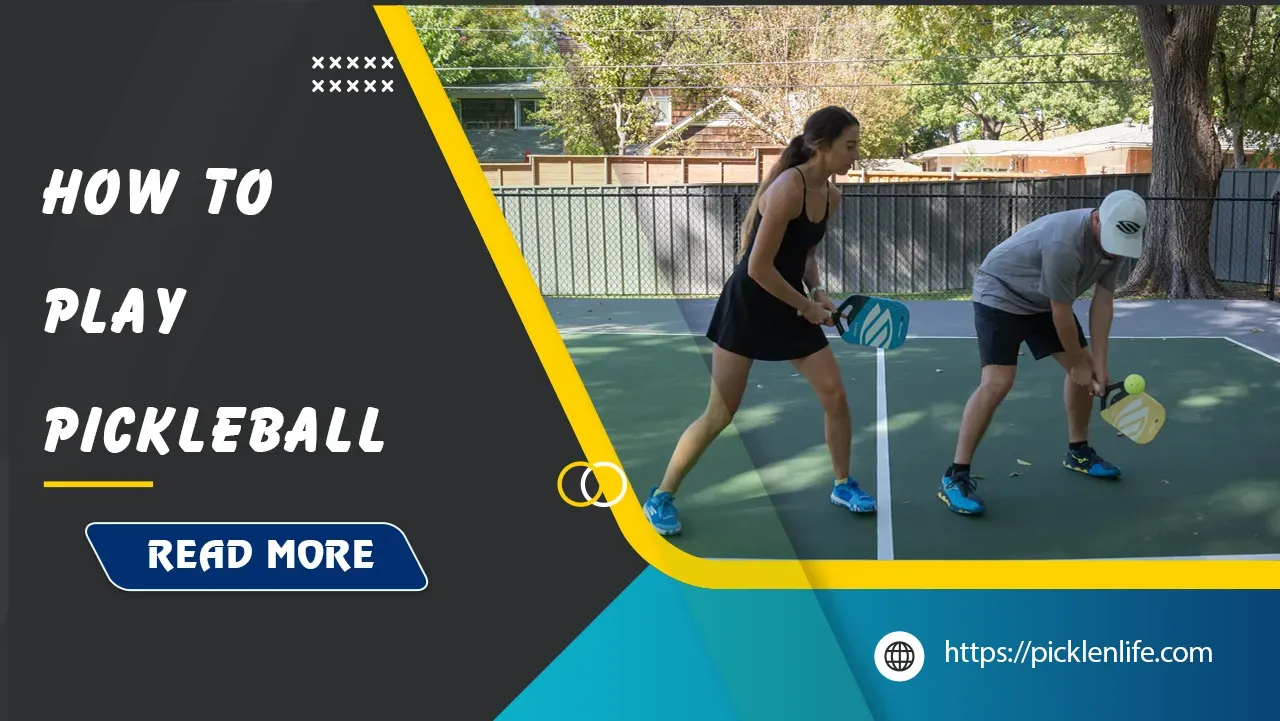
In this guide, you’ll learn how to play pickleball, from basic rules to winning techniques. Whether you’re a beginner or sharpening your game, this sport offers endless excitement. Ready to step onto the court? Let’s dive in.
Getting Started with Pickleball
To embark on your pickleball journey, it is essential to understand the basic concepts that form the foundation of the game. Familiarizing yourself with essential equipment and the fundamental rules is the first step in becoming a proficient player. As you delve deeper, you will discover that pickleball not only offers a fun way to stay active but also emphasizes strategy, collaboration, and friendly competition. With this understanding, you will be prepared to learn about the specific gear required to start playing and the court setup essentials.
Essential Equipment for Pickleball
Having the right equipment is crucial for an enjoyable pickleball experience. Here’s a detailed overview of the essential items you will need to get started:
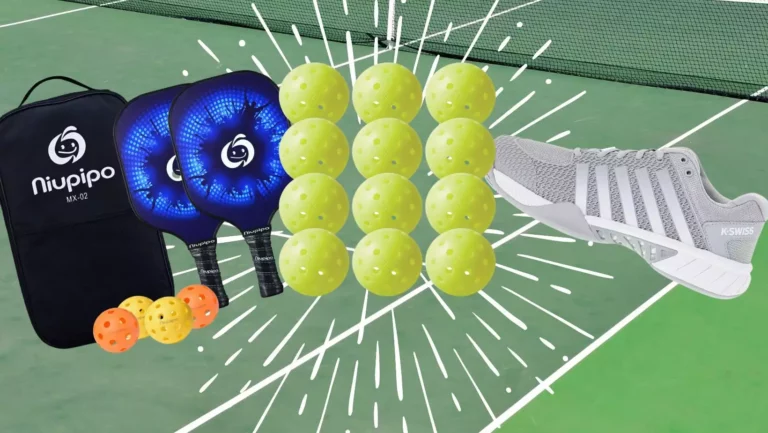
- Pickleball Paddle: This is your primary tool in the game. Beginners typically opt for wooden paddles, which are affordable (around $20-$30), while more advanced players might invest in composite or graphite paddles ranging from $50 to over $100. The choice of paddle affects your control and power, so it’s worth considering your playing style and skill level.
- Pickleball Balls: Balls used in pickleball are lightweight plastic spheres with holes, designed for different surfaces. Indoor balls tend to be softer compared to outdoor ones, which are more durable and better suited for outdoor play. Familiarizing yourself with the type of ball used for specific environments is essential for optimal gameplay.
- Court Shoes: Proper footwear is vital for safety and performance on the court. Look for non-marking shoes specifically designed for court sports, ensuring they provide ample support for lateral movements.
- Athletic Wear: Lightweight, breathable clothing is preferred in pickleball as it allows for freedom of movement. Moisture-wicking fabrics can significantly enhance comfort during long games.
- Net: If you are playing in your backyard or recreational area, a portable net is necessary. Regulation nets are 36 inches high at the sides and 34 inches at the center.
- Water Bottle: Hydration is key, so don’t forget to bring water or sports drinks to replenish your fluids during play.
Setting Up a Pickleball Game
To set up a pickleball game, understanding the court dimensions and layout is necessary. Pickleball is played on a court measuring 20 feet wide and 44 feet long, making it similar in size to a badminton court. Here’s a breakdown of the crucial areas of the court:
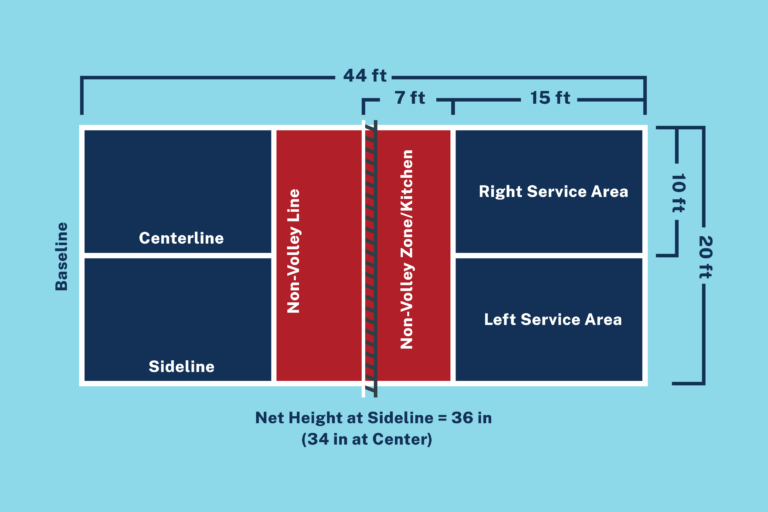
- Net Height: The net is set at a standard height of 36 inches on the sides and 34 inches at the center, similar to tennis.
- Non-Volley Zone (Kitchen): This area extends 7 feet from the net on both sides. Players cannot volley the ball hit it before it bounces in this zone, which adds an essential layer of strategy to the game.
- Service Areas: The service area is rectangular and divided into two halves by the centerline. A serve must be executed from the right side of the court and directed diagonally to the opponent’s service area.
- Baselines, Centerlines, and Sidelines: The boundaries of the court are clearly marked. The serving team must ensure their foot does not cross the baseline while serving, and players should be aware of their positions concerning centerlines and sidelines during the game.
- Portable Net: If you’re playing informally or on a temporary setup, using a portable net that meets the required dimensions can help establish a proper playing environment.
Creating a well-defined play area helps players focus on gameplay without confusion, allowing for an enjoyable experience for everyone involved.
How to Play Pickleball – Basic Rules
Now that you’re acquainted with the equipment and court setup, it’s time to dive into the fundamental rules governing pickleball. Having a solid grasp of the rules will pave the way for a smoother entry into the sport. Pickleball combines various elements from different racquet sports, with an emphasis on court positioning and strategic shot selection. Players need to familiarize themselves with serving rules, point scoring, and the critical two-bounce rule that defines the pace of the game. As we delve deeper into these regulations, it becomes clear how they directly influence gameplay dynamics, promoting skill development and engagement.

Serving Rules and Techniques
At the heart of pickleball lies the serve, which is not only a means to initiate play but also a crucial aspect that influences the tempo of the game. Understanding effective serving techniques enhances both your performance and strategic play:
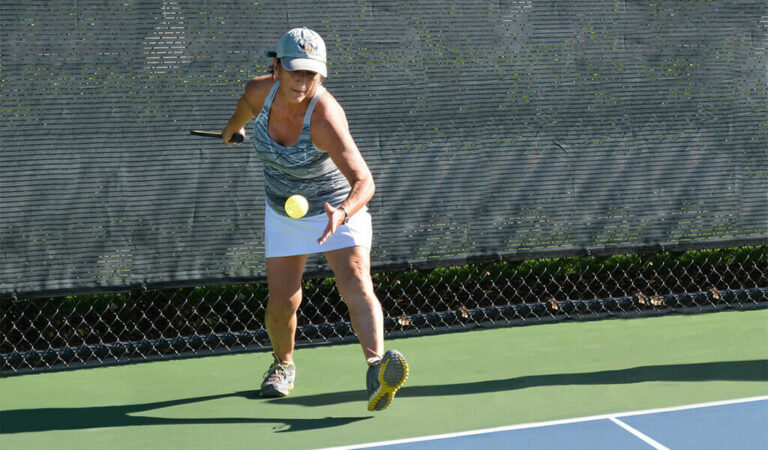
- Underhand Serve: The most common method of serving in pickleball involves an underhand motion. Players must strike the ball below their waist to ensure a legal serve. Aim for precision by placing your shot carefully in your opponent’s service area.
- Diagonal Serve: All serves must land in the opponent’s diagonal service box, establishing a pattern that’s similar to tennis. This rule encourages players to develop various serving strategies.
- Drop Serve: A legal serving option allows the ball to bounce before hitting it, removed from some of the regulations related to the underhand serve. This option can be used to catch opponents off guard, especially if they anticipate a standard serve.
- Serving Deep: An effective serving strategy is to serve deep into your opponent’s court. This approach can increase the chances of earning points while putting them on the defensive from the start.
Being mindful and developing competence in these serving techniques enables players to establish rhythm early in games and take control of their matches.
The Two-Bounce Rule
Integral to the gameplay of pickleball, the two-bounce rule is all about extending rallies and enhancing strategic movement. Under this rule, the ball must bounce once on each side before players can start volleying, which changes how the game is approached and played:
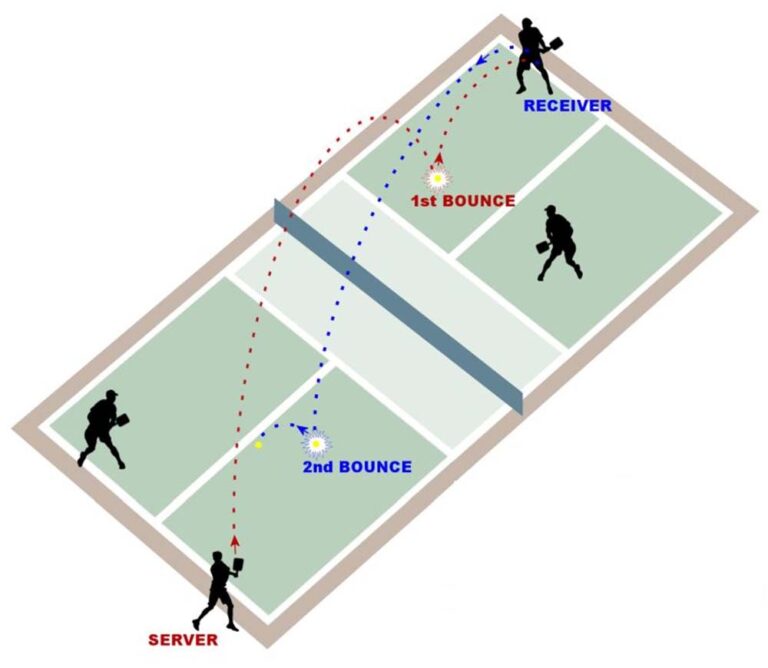
- Bounce Sequence: The sequence begins with the serve, which must bounce on the receiving side before being returned. Similarly, the serving team must let it bounce once before they can engage in a volley. This allows both teams an equal opportunity to establish control over the rally.
- Promoting Long Rallies: By mandating that the ball bounces before players volley, the two-bounce rule encourages longer rallies and promotes the development of skills such as positioning and strategic shot selection.
- Kitchen Strategy: Understanding the placement of shots in relation to the non-volley zone becomes critical. Players must avoid rushing to the net right after serving, as doing so can violate the bounce rule and result in faults.
Mastering the nuances of the two-bounce rule is key to improving your gameplay and enhances the competitive nature of the sport.
Non-Volley Zone (The Kitchen)
One of the most distinctive features of pickleball is the non-volley zone commonly referred to as the ‘kitchen.’ Understanding its implications is crucial for every player:
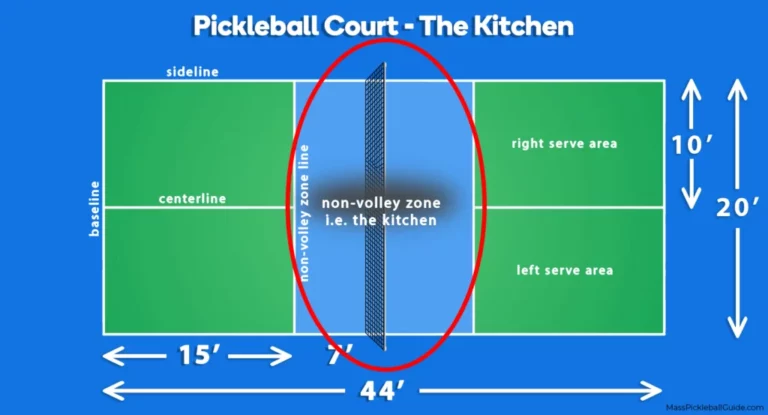
- Definitions and Restrictions: The non-volley zone extends 7 feet from the net on each side. Players cannot hit the ball while standing within this zone doing so results in a fault that can lead to loss of points.
- Strategic Movements: The kitchen rule directs players to focus on groundstrokes rather than aggressive volleys, fostering strategic play that is key to success in pickleball.
- Exceptions for Groundstrokes: While players cannot volley within the kitchen, if the ball bounces first in this zone, they are allowed to play it. Understanding the dynamics of this situation can create tactical advantages.
Recognizing the kitchen’s significance in gameplay encourages players to think critically about their positioning and shot choices in order to enhance performance and enjoyment on the court.
Scoring System and How to Announce the Score
Understanding how to score points in pickleball is vital for maintaining the flow of the game. Here’s an overview of the scoring system:
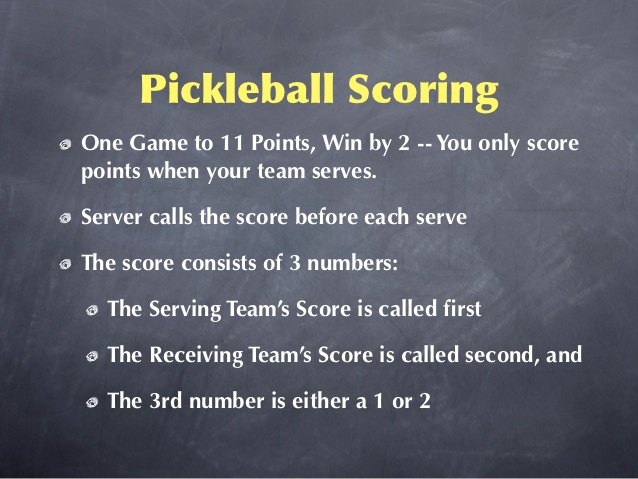
- Point System: Points can only be won by the serving team. When the receiving team fails to return the ball legally, the serving team gains a point.
- Games to 11: Matches are typically played to 11 points, requiring a two-point lead to win. This makes every point crucial, adding to the intensity and excitement of gameplay.
- Score Announcement: Communication is key in pickleball. Players are expected to announce the score using a three-number format: the serving team’s score, the receiving team’s score, and the serving team’s number of serves (e.g., “2-1-1”). This practice ensures that everyone is aware of the current state of play, reducing any potential misunderstandings or disputes.
Mastering the scoring system and learning how to announce scores properly will not only enhance your performance but also contribute to a more organized playing experience.
Common Faults
Being aware of common faults in pickleball is essential for improving your game and minimizing mistakes. Here are some frequent errors players encounter:
- Foot Faults: A common mistake occurs when players step into the kitchen or over the baseline while serving. To avoid this, ensure that at least one foot remains behind the baseline during your serve.
- Violation of the Two-Bounce Rule: Players often forget to let the ball bounce before volleying it on their side, which leads to faults. Staying mindful of this rule is crucial for competitive play.
- Out-of-Bounds Shots: It’s essential to monitor your shot placements to avoid hitting the ball out of bounds, as this results in loss of a rally or point.
By familiarizing yourself with these common pitfalls, you can enhance your focus on gameplay and improve your skills over time.
Mastering Basic Pickleball Shots
With an understanding of the basic rules of pickleball in place, the next step involves mastering the different types of shots that can significantly improve your gameplay. Each type of shot has its unique application, allowing players to adapt their strategies based on specific game situations.
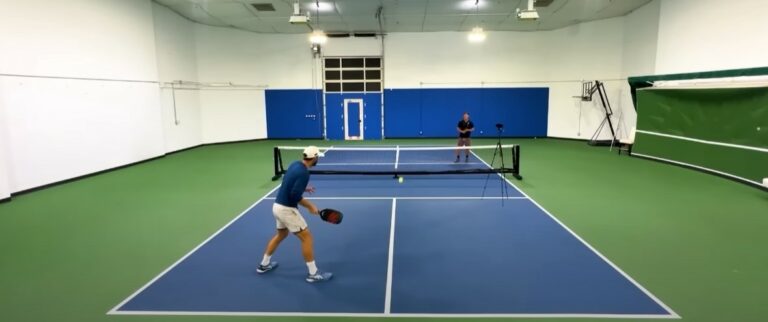
Types of Shots
- Volley: A volley is executed by hitting the ball before it bounces. It’s essential to engage your core and use a stable grip while positioning yourself to strike the ball.
- Groundstroke: This shot occurs after the ball has bounced, and players typically use it to maintain rallies. A powerful groundstroke can place significant pressure on your opponent.
- Dink: The dink is a subtle, soft shot aimed at the opponent’s non-volley zone. Mastering this shot can effectively keep your opponent defending, creating openings for aggressive shots.
- Drive: This aggressive shot is characterized by a powerful hit aimed to drive the ball deep into the opponent’s court.
- Lob: A strategic lob aims high over your opponent, ideally landing just inside their baseline. It’s an effective way to counter aggressive positioning.
- Overhead: Used when responding to high shots, the overhead smash can generate significant points if executed properly, showcasing power and control.
As you practice these shots, consider their strategic applications and how each can effectively apply pressure to your opponent.
Playing Doubles vs. Singles
As you advance in your pickleball journey, understanding the differences between doubles and singles play will help refine your skills and shot selection. Both formats bring their unique challenges and opportunities.
Doubles Play: Team Positioning and Strategy
When playing doubles, team coordination and strategic positioning are paramount:
- Team Positioning: Partners should position themselves effectively at the net and rally for control. One player can focus on volleys while the other secures defensive shots, allowing both to cover the court effectively.
- Serving Order: Each player must understand their serving order and rotation system, which ensures both partners are actively engaged in the game.
- Targeting Opponents: Coordinate your shots with your partner to place pressure on your opponents, often targeting the area between them to create confusion.
- Communication: Clear communication about responsibilities prevents overlap during rallies and allows for smoother play.
Doubles play emphasizes teamwork and strategic planning, rewarding players who can work together effectively while adapting to the dynamics of each rally.
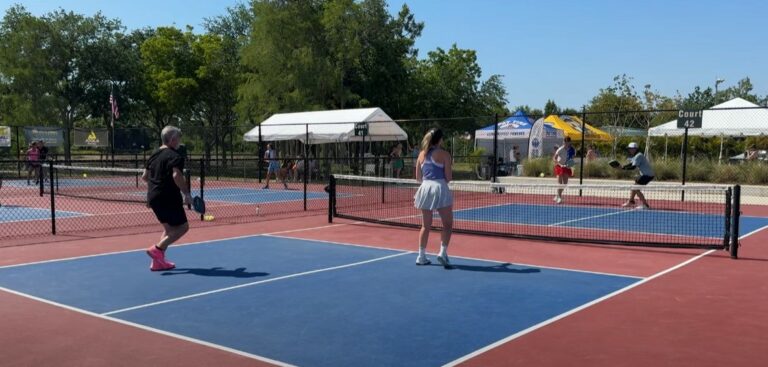
Singles Play: Adaptations and Scoring
In singles play, the game shifts significantly, as each player must cover the entire court alone. Here are key adaptations to consider:
- Coverage Strategy: Players should focus on efficient court coverage, balancing their movements strategically to maintain their position based on their opponent’s actions.
- Power and Precision: Since there’s less opportunity to rely on a partner, the focus is on developing powerful shots, effective serves, and anticipating the opponent’s movements with accuracy and finesse.
- Serving Positions: In singles play, serving becomes even more critical, as it can set the tone for each rally. Aim for deep serves to keep your opponent under pressure.
- Scoring Dynamics: The scoring system remains similar, with matches typically going to 11 points, requiring a two-point lead to win. However, the intensity of singles play emphasizes individual skill and strategy.
Understanding these distinctions between singles and doubles play will help you adapt your gameplay effectively, maximizing your performance on the court.
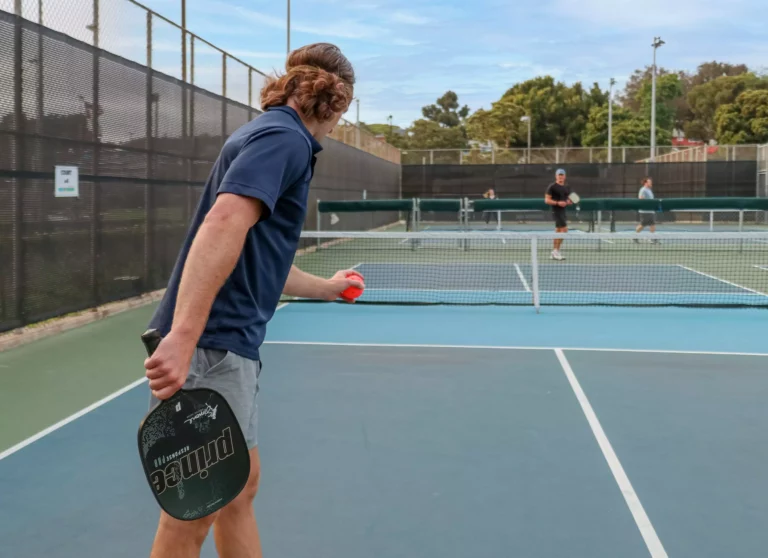
Advanced Strategies and Tactics
With a foundation laid in rules, shots, and playing formats, exploring advanced tactics will elevate your pickleball game to new heights. These strategies encompass shot placement, effective deception, and reactionary techniques that can turn matches in your favor.
Shot Placement and Deception
When it comes to executing advanced strategies, mastering shot placement and executing deceptive plays are critical components:
- Targeting Weaknesses: Use shot placement to exploit your opponents’ weaker sides or areas where they lack coverage, putting them on the defensive.
- Strategic Dinks: Short dinks can disrupt rhythm and force opponents to rush their returns. Use this tactic to encourage mistakes and capitalize on openings.
- Deceptive Shots: Introducing deception into your game can keep your opponents guessing. For instance, disguising your intention on shots can lead to surprising plays, gaining you an advantage.
- Third-shot Drop: A well-placed third-shot drop into the opponent’s non-volley zone can create opportunities to advance toward the net for the next attack.
By focusing on the subtleties of shot placement and employing deceptive strategies, players can gain a significant tactical advantage, enhancing their overall performance on the court.
Counter-Attacking Techniques
Mastering counter-attacking techniques is essential for transitioning effectively from defense to offense:
- Recognizing Opportunities: Anticipate your opponent’s shots and recognize when they overcommit. This moment can create openings for aggressive counter-attacks.
- Transitioning from Defense: Take advantage of defensive situations; once your opponent makes a mistake, use quick footwork to reposition yourself and respond effectively.
- Using Angles: Create angles to return shots, positioning your opponent in a vulnerable state where they must stretch to reach the ball.
These counter-attacking techniques can turn the tide during matches, leading to significant advantages when executed flawlessly.
Reading Opponents
An essential skill for any pickleball player is the ability to read opponents effectively. Understanding your opponent’s movements can reveal their intentions:
- Body Language: Observing your opponent’s body language and paddle positioning can help predict their incoming shots.
- Movement Patterns: Recognizing their footwork can provide insights into their play strategies. Being aware of these movements helps enhance your decision-making.
- Practice Drills: Incorporate drills focusing on reading your opponents into your practice routine to sharpen your awareness and quicken reactions.
By developing these analytical skills while maintaining peripheral awareness, players can significantly enhance their performance and responsiveness during games.
Injury Prevention and Recovery
As with any physical activity, injury prevention and recovery are vital components of a successful pickleball experience. Understanding how to care for your body can prolong your enjoyment of the sport.
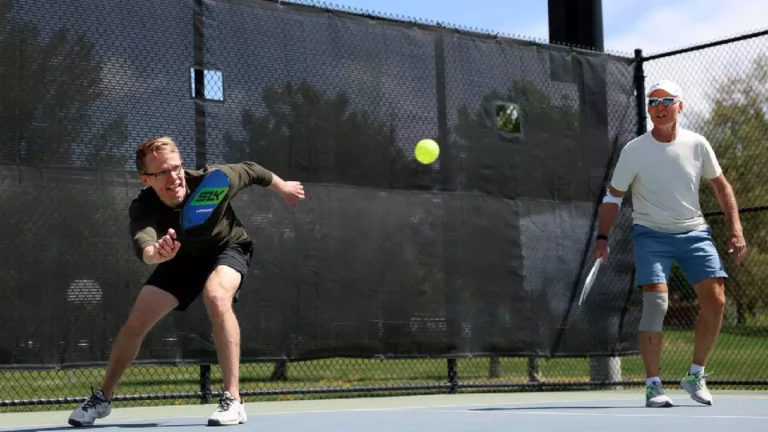
Warm-Up and Stretching Exercises
Prior to diving into pickleball matches, it’s crucial to properly warm up and stretch to prepare your body for the demanding movements:
- Dynamic Warm-Ups: Warm-up activities should include dynamic stretches like arm circles, torso twists, and leg swings. This ensures blood flow and flexibility, reducing injury risks.
- Cardio Activities: Engaging in light aerobic exercises, like jogging or jumping jacks, helps elevate heart rates and warm up muscles before gameplay begins.
- Post-Game Stretching: After matches, static stretches focused on major muscle groups can help to maintain flexibility and prevent stiffness.
Incorporating a structured warm-up and stretching routine minimizes injury risk while also enhancing performance on the court.
Common Pickleball Injuries and Prevention
Being aware of common pickleball injuries can help players proactively address potential issues:
- Pickleball Elbow: A common overuse injury resulting from repetitive motions affecting the elbow tendons. Strength training and proper technique can aid in prevention.
- Ankle Sprains: Occur due to sudden lateral movements. Wearing appropriate shoes and maintaining a strong foundation can help mitigate these risks.
- Back Pain: Often resulting from poor mechanics. Incorporating core-strengthening exercises can improve posture and stability, ultimately reducing incidence.
By taking preventive measures both through proper preparation and learning about common injuries players can significantly lower their risk of setbacks.
Recovery Techniques
Post-game recovery is just as essential as injury prevention. Implementing effective recovery techniques can aid in maintaining optimal physical condition:
- Hydration: Drinking adequate fluids post-game is vital for recovery. Water or electrolyte drinks help replenish lost fluids through sweat.
- Active Recovery: Engaging in light activity, such as walking or gentle yoga, can enhance circulation and aid in muscle recovery.
- Use of Ice or Heat: Applying ice to any areas of discomfort can help reduce inflammation, while heat can relieve tight muscles. Tailoring these techniques to your body’s needs can facilitate quicker recovery.
By focusing on effective recovery methods, players can ensure they’re ready for their next game, maintaining a consistent playing schedule.
The Mental Game of Pickleball
The mental aspect of pickleball is a critical yet often overlooked component of the game. Developing mental resilience and focus enhances performance, particularly during competitive matches.
Managing Pressure and Maintaining Focus
Understanding how to handle pressure when competing is vital for success:
- Cognitive Engagement: Engaging your working memory in calculations related to scores, rules, and court positioning helps improve focus.
- Mindfulness Techniques: Breathing exercises and visualization can ease pressure and enhance focus during matches where the stakes are high.
- Social Aspects: The community aspect of pickleball can create supportive environments that alleviate stress. Interacting with teammates fosters comfort and reduces mental strain.
Incorporating mental strategies alongside physical skills can improve performance reliability and enhance overall enjoyment of pickleball.
Developing a Competitive Mindset
Cultivating a competitive mindset primes players for success:
- Growth Mindset: Embrace challenges as opportunities for growth. Acknowledging failures can posit chances for learning and improvement.
- Goal Setting: Setting specific, achievable goals maintains motivation and directs focus toward skill improvement and performance enhancement.
- Mental Resilience: Continuously practicing can build resilience, enabling players to stay composed and focused despite challenges faced during play.
Fostering a competitive mindset is essential for players looking to excel in the sport while enjoying their experiences on the court.
Pickleball for Mixed Abilities and Ages
Ensuring that pickleball remains accessible for players of mixed abilities and ages is vital for community engagement:
- Adaptive Strategies: Incorporating adaptive equipment and modified rules can enable participation for individuals with varying physical capabilities.
- Senior Adaptations: Players with limited mobility can benefit from rule modifications, such as allowing multiple bounces before hitting the ball.
- Community Programs: Establishing inclusive community programs helps facilitate interactions and fosters a supportive environment for all players.
By emphasizing inclusivity and adaptability, pickleball remains an accessible sport that embraces diversity while enhancing social interactions within communities.
Modifications for Seniors or Players with Limited Mobility
Creating an environment conducive to seniors or those with limited mobility ensures enjoyment for all players:
- Court Modifications: Smaller court sizes and adjusted rules facilitate play for those with mobility challenges, allowing participation without undue strain.
- Adaptive Equipment: Lightweight paddles designed for ease of grip or wheelchairs tailored for pickleball can enhance gameplay for individuals with physical limitations.
- Encouragement of Mixed Matches: Promoting mixed-ability matches can inspire teamwork and collaboration, enhancing social bonds among players.
These modifications nurture an inclusive pickleball environment where everyone can enjoy the game regardless of their physical abilities.
Adaptive Pickleball for Players with Disabilities
Adaptive pickleball provides opportunities for individuals with disabilities, ensuring inclusivity:
- Modified Rules: For players using wheelchairs, adaptations like allowing two bounces before hitting the ball can enhance engagement and enjoyment.
- Specialized Coaching: Professional instruction tailored to individuals with disabilities encourages skill development, reinforcing confidence and competence.
- Community Inclusion: Establishing inclusive leagues or clubs fosters connections and promotes a sense of belonging, contributing to improved mental health and well-being.
By focusing on adaptive measures, pickleball becomes a sport that enriches the lives of individuals with disabilities, ensuring they too can share in the joy and community that the sport offers.
Finding Pickleball Courts and Communities
Finding local pickleball courts and engaging with communities can enrich your experience and enhance social engagement:
Using Online Court Finders and Resources
Several online resources can locate nearby courts, making it easier to join in on the action:
- Court Finder Apps: Applications like Pickleheads and Places2Play help players track nearby pickleball courts, providing essential details about specific locations and availability.
- Local Clubs and Social Media: Platforms like Facebook offer groups where local players can discuss events, available courts, and gameplay opportunities.
- Collaborative Online Directories: Utilizing directories such as USA Pickleball’s comprehensive court locator provides insight into nearby facilities and play opportunities.
By leveraging these resources, players can easily immerse themselves in the local pickleball community, leading to newfound friendships and enjoying the sport.
Joining Local Pickleball Clubs and Organizations
Connecting with local clubs and organizations can greatly enhance your pickleball journey:
- Community Engagement: Pickleball clubs provide various resources, including organized playtime and competitive leagues, deepening engagement and camaraderie.
- Skill Development: Many clubs offer clinics and classes led by experienced players, aiding in skill development and strategic understanding.
- Social Play: Participating in organized events fosters social opportunities, allowing players to make friendships and connections with others in the sport.
Joining your local pickleball club can elevate your skill level, create lasting friendships, and significantly enhance your overall playing experience.
Tips for Pickleball Beginners
If you’re just starting your pickleball journey, these tips can significantly enhance your experience:
- Stretch: Always warm up to avoid injuries and increase muscle readiness for the game.
- Keep Your Focus: Concentration during rallies is essential. Reduce distractions and maintain mental engagement while playing.
- Maintain Your Breathing: Stay calm and focused by practicing deep breathing techniques to keep nerves in check during competitive settings.
- Stay on the Balls of Your Feet: Keeping your weight on the balls of your feet improves reaction time and allows for swift movements around the court.
- Aim for Long Rallies: Developing endurance through extended rallies reinforces stamina, a key component for pick up games.
- Keep It Simple: Don’t overthink strategies; focus on fundamental skills to build confidence during initial play.
- Learn from Mistakes: Embrace failures as learning experiences and adjust your techniques accordingly.
- Have Fun!: Remember that pickleball is about enjoyment, so embrace the game and the community it fosters.
With these tips in mind, embark on an exciting journey into pickleball, where new friendships and thrilling gameplay await you.
Conclusion
By now, you have a comprehensive understanding of how to play pickleball! From essential rules and equipment to strategies for scoring and executing advanced techniques, this guide serves as your companion in navigating this exciting sport. Remember, pickleball caters to players of all ages and skill levels, making it an inclusive and enjoyable experience.
Equip yourself with the knowledge to make the most of your time on the court. Don’t hesitate to take the plunge – find a local court, gather your friends or family, and experience the joy and camaraderie that pickleball offers. Celebrate the benefits of physical fitness, social interaction, and skill development as you dive into the rewarding world of pickleball. Happy playing!
